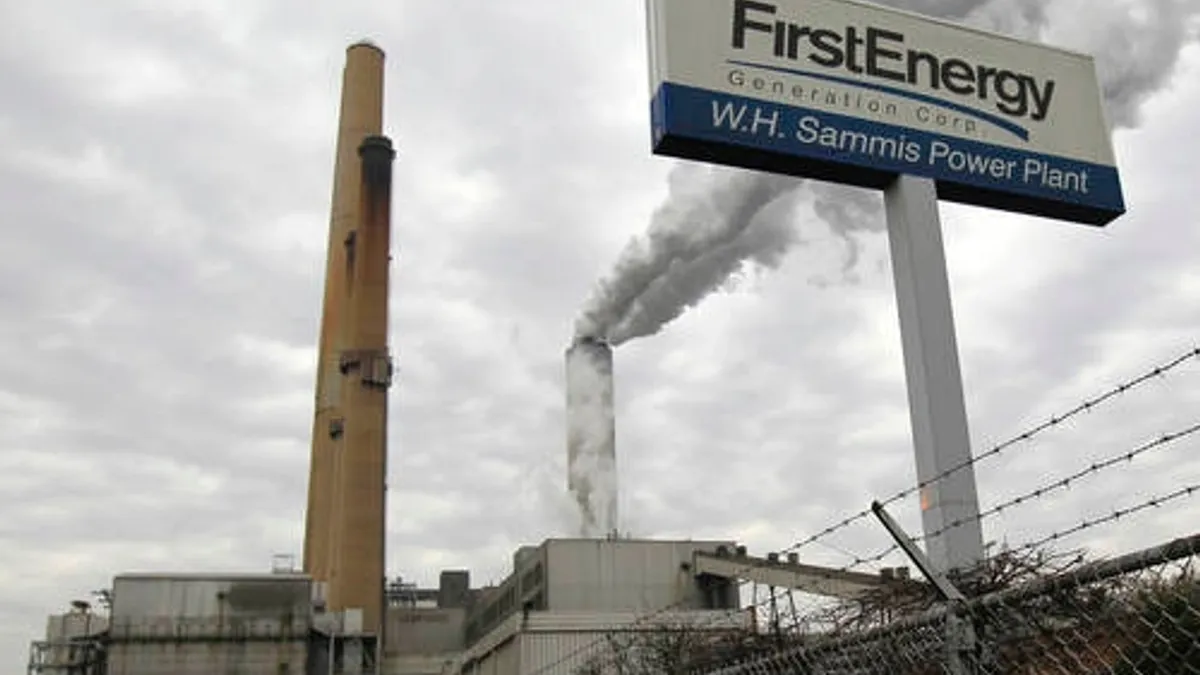Dive Brief:
-
U.S. power providers will close more coal-fired generation capacity in 2018 than any year before, according to research released last week by the Institute for Energy Economics and Financial Analysis (IEEFA), a clean energy think tank.
-
The U.S. will retire 15.4 GW of coal capacity this year, IEEFA reported, representing 44 generation units across 22 plants. By 2024, an additional 21.4 GW of coal capacity will go offline, and that number will likely rise as generators announce more retirements.
-
IEEFA expects the 2018 retirements to "easily" surpass the current record of 14.7 GW of coal retirements, set in 2015. The U.S. still has 246 GW of coal capacity online, and announced retirements through 2024 represent about 15% of that operating fleet.
Dive Insight:
The IEEFA report highlights the accelerating trend of coal plant retirements, but also illustrates just how much of the carbon-heavy resource is still left on U.S. power grids.
The U.S. will retire more than 36 GW of coal capacity by 2024, but will still have more than 200 GW of coal on the system at that point, according to the think tank.
IEEFA analysts expect actual coal retirements by that time to be "significantly" higher than their projection, as utilities are accelerating their plant shutdowns.
"Fully two-thirds of 2018's retirements were only announced in 2017, a clear indication that utilities have shortened their lead time before closures," analysts wrote.
As many other research houses have noted in recent years, the main culprit behind coal plant retirements is competition from cheaper natural gas and renewable energy, rather than environmental regulations that coal producers often criticize.
"[T]he competitive environment for coal-fired power in the generation marketplace is becoming ever more challenging as the price of renewables continues to fall and as natural gas prices are expected to remain low for the foreseeable future," analysts wrote.
The coming wave of coal retirements is expected to hit the Midwest hard, particularly the Ohio River Valley, IEEFA notes. After generator FirstEnergy Solutions declared bankruptcy earlier this year, it announced it would retire the 2.5 GW Bruce Mansfield plant in Pennsylvania and the 2.1 GW W.H Sammis Plant in Ohio in the early 2020s.
The company's 1.3 GW Pleasants Power Station will also close by 2022, and rival utility American Electric Power will begin to shut down its 1.5 GW Conesville Plant in Ohio next year.
"All of the closures are occurring far sooner than expected," IEEFA noted.
Workers affected by these shutdowns include employees of the utilities and coal mining companies Murray Energy and Westmoreland Coal, IEEFA notes. Murray and FirstEnergy have pushed the Trump administration this year to provide financial support for retiring plants, but a plan to do so is reportedly on hold at the White House.
Outside of Ohio and Pennsylvania, other states that will experience coal closures by 2024 include Florida, Indiana, Minnesota, Missouri, Kansas, Kentucky, Maryland, Tennessee, Texas, Virginia, West Virginia and Wisconsin, according to IEEFA.
The list of states shows how energy economics are working against coal even in America's heartland. Earlier this month, a coal-heavy Indiana utility released modeling that showed it could save customers $4 billion over 30 years by moving from 65% coal to none in 2028 and replacing the retired capacity with renewable energy resources.
Environmentalists plan to use findings like that to push utilities to retire the rest of America's coal fleet. Earlier this year, the Rocky Mountain Institute, a clean energy think tank, awarded $2 million to veteran anti-coal activist Bruce Nilles to make the "cold hard economic case" against the remaining coal fleet.
"In many of the places where coal is still being used, a climate change argument will probably not be effective," Nilles told Utility Dive this month. "It should be about the economic wisdom of continuing to run coal plants when there are such low-cost alternatives available."














